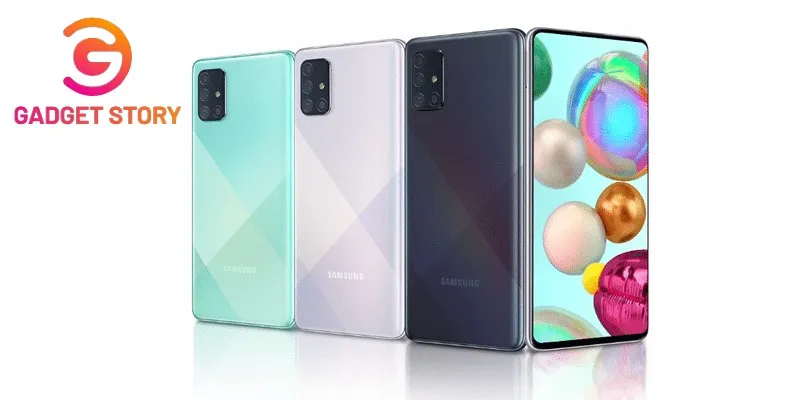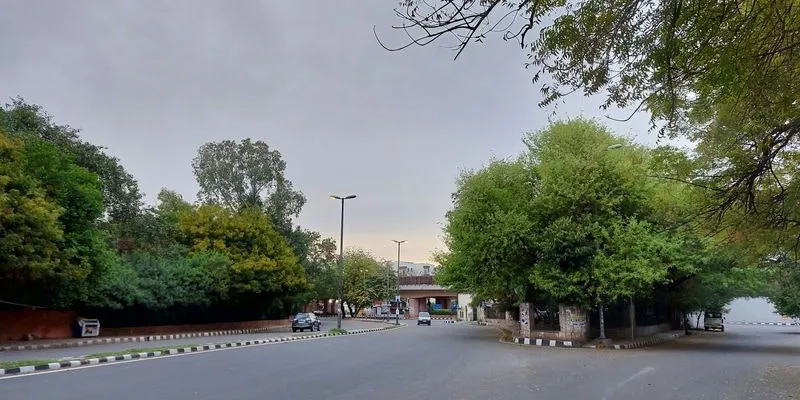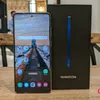Samsung Galaxy A71: A well-rounded mid-range smartphone that’s been priced too high
Samsung Galaxy A71 is far better than the Galaxy A51, but one wishes that the former wasn’t priced way above where it should be.
If you want to purchase a new smartphone from a reputable brand, and are on a strict budget of Rs 30,000, then you’re in luck.
Samsung has smartphones across all price ranges in the Indian market. There are the flagship S-series and Note-series smartphones, then comes the S10 Lite and Note 10 Lite. Thereafter is Samsung’s A-series, going all the way down to the M-series.
A few weeks ago, I reviewed the Galaxy A51 from the company and wasn’t too enthused by the device. Today I’m going to talk about its big brother — both in size and performance — the Galaxy A71.

Photo courtesy: Samsung India
Here’s what I thought after using the phone for more than ten days:
The Galaxy A71 is the 2020 successor to 2019’s Galaxy A70 and Galaxy A70s, and is better in almost every way. It’s got a smaller notch in the centre, a brand new chip - Snapdragon 730 - a much-improved rear-camera setup featuring a macro snapper, and Samsung’s brand new One UI 2.0 based on Android 10.
It also retains the Galaxy A70/A70s’ best features such as the large 4,500mAh battery and 25W fast charging.
The Galaxy A71 is slightly larger than the Galaxy S20 Plus, despite both having the same display size of 6.7-inch. It’s the biggest Galaxy offering from Samsung bar the flagship Samsung Galaxy S20 Ultra.
The smartphone has Gorilla Glass 3 protection for the Super AMOLED display, while the frame and back (with its dazzling colours) is made of plastic.
The overall profile is sleek, and is also very light to hold in the hand. It’s a pleasure to hold it during long video calls or gaming sessions.

The downside to having a rear panel with a ‘glasstic’ finish is that it is susceptible to scratches. The Galaxy A71 comes in Prism Crush Black, Prism Crush Silver and Prism Crush Blue. Essentially, you get a gradient prism effect when looking at the phone from different angles.
There is the camera bump, that Samsung is comfortable with nowadays, on the top left-hand side of the rear panel. It juts out with just a tiny aluminium frame to keep it safe.
The rest of the phone is quite ordinary. The power button and volume rockers sit on the right. The left side has the SIM tray. On the bottom, there is the speaker grille, a 3.5mm headphone jack, and a USB Type-C port.
Display
The 6.7-inch FHD+ Super AMOLED Plus display features, for the first time in an A-series device, a centred punch-hole for the selfie camera. It’s not the tiniest one around but it sure is better than the waterdrop-shaped cutout on the predecessor. The display has a resolution of 2400x1080 pixels, with a 20:9 aspect ratio.
It’s a vibrant display that can get as bright as 515 nits using the Adaptive Brightness feature, and the colours look rich and vivid. As always, Samsung is ahead of the competition when it comes to displays. But the Galaxy A71 makes one misstep. The handset may be Widevine L1 certified – for full-HD content from OTT platforms – but omits the HDR10 certification, which means that one cannot enjoy premium HDR content from the likes of Netflix and Amazon Prime.

Performance and Software
While the Galaxy A51 runs on Samsung’s own Exynos 9 Octa 9611 chipset, the Galaxy A71 is fortunate to be using Snapdragon’s 730 processor. It makes a whole world of difference. One can notice that multitasking is breezier and the overall feel is snappier.
One UI 2.0 is more fluid as compared to the previous days of TouchWiz, and it does a lot to make sure the phones are far from sluggish. One UI 2.0 combined with Snapdragon 730 is a win-win for the Galaxy A71.
The one software upside for the Galaxy A71 is that it gets Edge Screen. It gives you quick access to your favourite apps and certain tools like reminders and more. The rest – like gesture navigations and dark mode – are also present.
The Snapdragon 730 handles all tasks and most games without any hiccups. The device very rarely heated up (only during charging sessions), and it never glitched while multitasking.
Battery life
The 4,500mAh battery was good enough for two days, with low-to-medium usage. Play some games and watch a lot of videos and the Galaxy A71 will still last you a day, sometimes even till the morning after.
With brightness and volume on full, the Galaxy A71 lasted for fifteen hours while playing videos, and over 13 hours during the browser test.
The Galaxy A71 also supports fast charging with a 25W charger. It takes about 80 minutes to replenish an empty battery. Safe to say, you won’t be disappointed.

Speakers
There’s just a single firing speaker at the bottom, which is a disappointment. Though it still gets very loud, the sound isn’t clear at full volume. It’s just about average for a smartphone in its price bracket.
However, it’s good enough for casual gaming sessions, and playing music and podcasts.
Quad-camera
The Galaxy A71 packs a quad-camera setup. There’s the 64-megapixel primary shooter, a 12-megapixel ultra-wide-angle cam, a 5-megapixel macro camera, and a 5-megapixel depth sensor. There’s also flash, with a single LED. The front features a 32-megapixel punch-hole selfie shooter.
The camera app is exactly the same as on all other Samsung smartphones.

Daytime shot
The daytime images from the main camera came out really nice, with good detailing and vibrant and saturated colours. It isn’t something out of the ordinary but it is pleasing to the eyes with good dynamic range. Finally, the noise reduction is good, but not great. Again, you’re not going to be disappointed.
The portrait shots also came out far better than what I was expecting, especially vis-a-vis the Galaxy A70/A70s. The edge detection has vastly improved, and I can say that it is one of the best in the mid-range segment.
The ultra-wide shooter also produces good photos. There’s more sharpness, good dynamic range boosted by the Auto HDR, and punchy colours. Surprisingly, I didn’t find much noise in these wide-angle shots compared to some of the competitors.
For me, the macro camera (just like on the Galaxy A51) was a big let down. I’ve seen much better on the K30 Pro and other phones. The details just aren’t captured. The problem is that the macro camera has a fixed focus of 5cm. If you’re off by even a little bit, well, so will the resulting image.

Night mode shot
Whenever possible, use the night mode, instead of trying to capture low-light images. Samsung has vastly improved their night photography, and it shows on the Galaxy A71 with more details and less noise.
Selfies are good too, just not great. They’ll be worthwhile for all those Insta Stories.
Verdict
If you own a smartphone from 2019, then there is probably no need to upgrade to the Galaxy A71. On its own, the Galaxy A71 is expensive, coming in at Rs 29,999 for its single-variant 8GB RAM and 128GB storage model.
At that price, the competition is stiff. There’s the Realme X2 Pro – with the Snapdragon 855 and a larger Super AMOLED screen – and the Redmi K20 Pro.
Price aside, the Galaxy A71 might be the most well-rounded smartphone in the Rs 20,000 to Rs 30,000 price range. It’s got a gorgeous display and a sleek design, with a Snapdragon 730 SoC under-the-hood.
The Galaxy A71 is far better than its smaller brother, the Galaxy A51, but one wishes that the former wasn’t priced way above where it should be. The Galaxy A71 will become an easy recommendation once it is priced at about Rs 25,000.
(Edited by Kanishk Singh)













